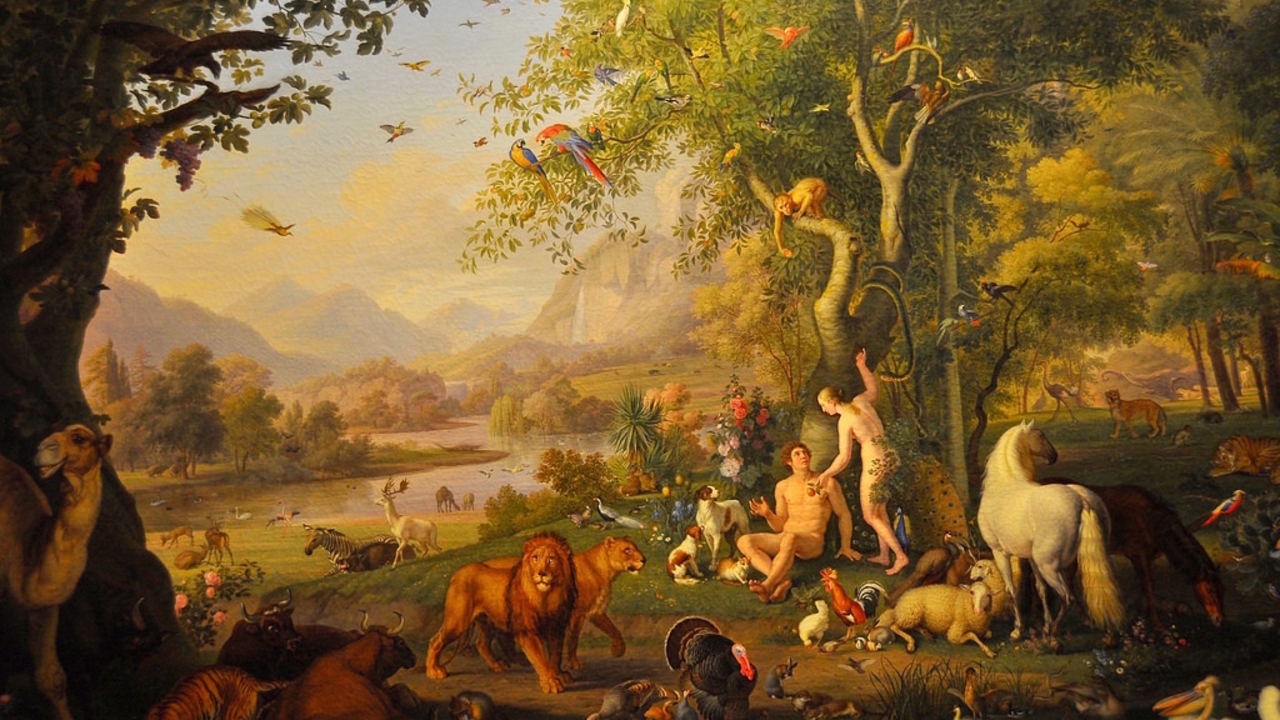
The Historic Eden: Why the Garden's Reality Matters for Your Faith
In the middle of the 17th century, the Puritan poet John Milton penned an epic poem that has stood the test of time as one of the greatest in the English language. Spanning 12 books and over 10,000 lines of poetic verse, Milton’s Paradise Lost is a monumental work that recounts the fall of man, Satan's rebellion, the temptation of Adam and Eve, and their eventual expulsion from the Garden of Eden. The opening lines of the poem famously declare:
"Of Man’s first disobedience and the fruit
Of that forbidden tree, whose mortal taste
Brought death into the world, and all our woe,
With loss of Eden, till one greater Man [Christ],
Restore us and regain the blissful seat."
Milton’s stated purpose in writing Paradise Lost was "to justify the ways of God to men." While the poem aligns with much of the Biblical narrative, it also takes creative liberties, constructing elaborate stories not found in Scripture. Like Bunyan’s Pilgrim’s Progress, Milton’s work seeks to fill in the unseen details of the spiritual realm. However, it is important to remember that Paradise Lost is a fictional retelling of actual events. This distinction is crucial, especially in a time when many question the historicity of Eden itself.
The Reality of Eden
Today, there are those who doubt the existence of Adam and Eve and, by extension, the reality of Eden as a historical place. However, as Christians, we have every reason to believe that Eden was a real, physical location. The Bible provides us with numerous insights into the reality of Eden, and these details are crucial in understanding the historic nature of man’s first home. Eden is not just a prototype of the coming Paradise of Heaven but a tangible place that once existed in space and time.
The Historic Nature of Eden
In Genesis 2:8-17, we find a physical description of the Garden of Eden. This is not a land of make-believe but a real geographical location that can be mapped out. The text tells us that God planted a garden in the eastern part of Eden, a larger geographical area that included the Garden. The mention of rivers like the Tigris and Euphrates and locations such as Assyria and Cush further grounds Eden in history. While Eden has not been found, likely due to its destruction in the Flood, its existence is not to be dismissed as mere mythology.
The Garden’s Description
The Garden of Eden is described as having three main components: irrigation, vegetation, and beauty. It was a place that functioned according to the natural laws God created. The garden required water, produced food, and was adorned with precious metals and gemstones, making it a place of both function and form. This description reminds us that man, created in God’s image, needs both utility and beauty. The garden was not magical; it was real, designed for man’s sustenance and delight.
The Garden’s Legislation
Within the Garden, there existed two significant trees: the Tree of Life and the Tree of Knowledge. The latter was the only tree forbidden to Adam, representing God’s command and the consequence of disobedience—death. These trees point to the spiritual component of the Garden, emphasizing that man was not only physical but also spiritual. The command to avoid the Tree of Knowledge was the first law given to man, and its transgression led to the fall, introducing sin and death into the world. This pivotal moment in history is essential to understanding the need for redemption through Christ.
The Significance of Eden
The existence of Eden is foundational to Christian theology. Without Eden, there would be no original command, no first transgression, and thus no need for redemption. The entire New Testament relies on the reality of Eden, Adam, and the fall. Paul, in his letters to the Romans and Corinthians, makes it clear that the disobedience of Adam and the obedience of Christ are central to our understanding of sin and salvation.
Conclusion: The Promise of Paradise
Why is it essential to stress the reality of Eden? Because Eden’s paradise is analogous to the paradise we look forward to as believers. If Eden is relegated to mythology, it is only a short step to do the same for heaven. The Bible’s grand narrative—Creation, Fall, Redemption, Restoration—depends on the reality of Eden. As believers, we look back to what was lost in Eden with the hope of what will one day be restored in the New Heaven and New Earth.
Milton’s Paradise Lost is a powerful exploration of man’s fall, but it is his lesser-known work, Paradise Regained, that offers the hope of restoration. In it, Christ is depicted as the victor over Satan, reclaiming what was lost in Eden. The comparison between the Garden of Eden, where Adam rebelled, and the Garden of Gethsemane, where Christ submitted to God’s will, highlights the two paths before us: rebellion or redemption.
Where do you find yourself? Still doubting, questioning if it’s all just a dramatic mythology? Still in rebellion, knowing the truth but unwilling to submit? Or are you in Christ, redeemed by His work alone? Remember, for those in Christ, paradise is no myth—it is the promise of God.
“Let not your hearts be troubled. Believe in God; believe also in me. In my Father’s house are many rooms. If it were not so, would I have told you that I go to prepare a place for you? And if I go and prepare a place for you, I will come again and will take you to myself, that where I am you may be also.” (John 14:1-3)
For those who believe in Christ, the promise of Eden restored—a new and eternal paradise—is as real as the breath in our lungs.
